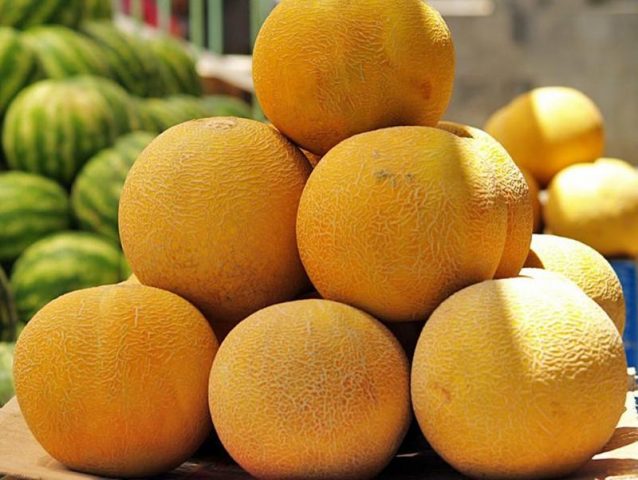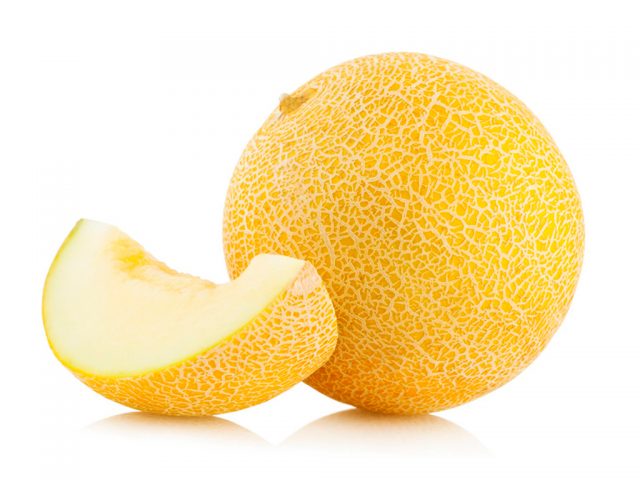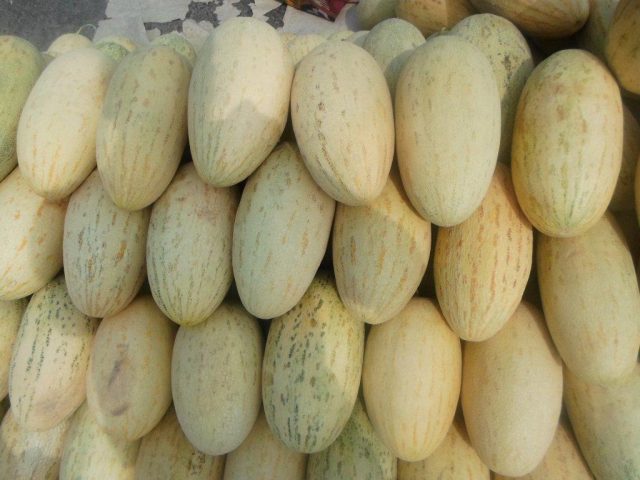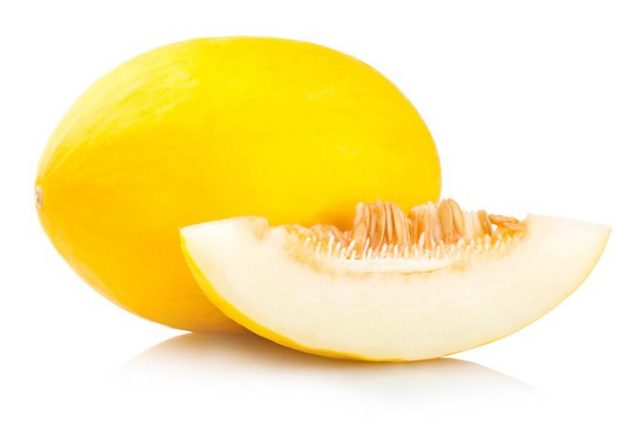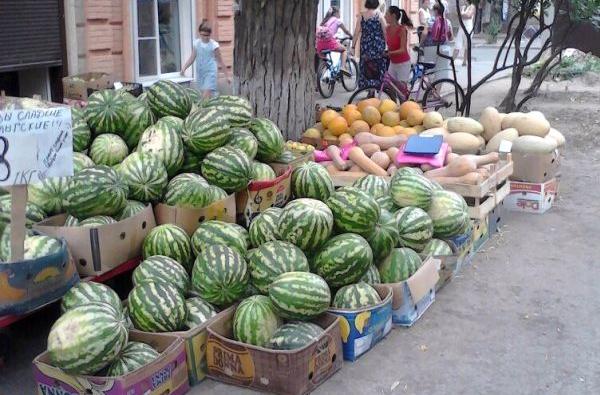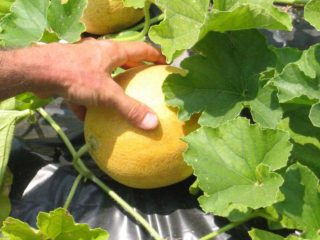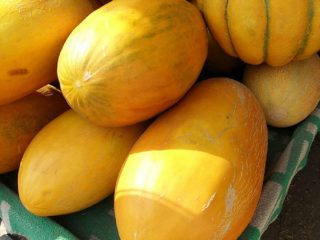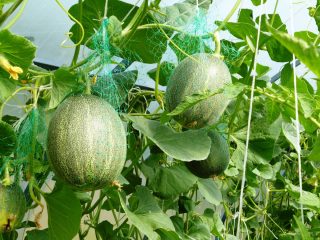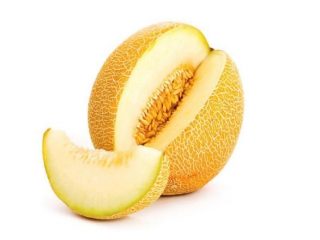Content
- 1 How to choose the right melon
- 2 How to determine the ripeness of a melon
- 3 How to choose the right ripe melon in appearance and fruit color
- 4 How to identify a ripe melon by smell
- 5 How to choose a ripe and sweet melon by sound
- 6 How to choose a ripe melon by spouts and tails
- 7 How to determine the presence of nitrates in a melon by appearance
- 8 When is it worth abandoning a purchase
- 9 Conclusion
You can choose a sweet melon for several reasons. Traditionally, autumn fruits such as watermelons and melons are now on sale all year round. Ripe fruit has a moderately dense juicy pulp and a characteristic sweetish odor. To find the most delicious "torpedo" or "kolkhoz woman", the buyer just needs to use hearing, sight and smell. You do not need to cut a future purchase.
How to choose the right melon
You can buy melons and gourds in an urban setting, especially far from their place of growth, in different places:
- in the "vegetables and fruits" supermarket departments;
- in specialized grocery stores;
- in the collective farm markets;
- on seasonal breaks.
It is not worth buying fruit from the trunk of a car or from the ground, even if the seller claims that the product is of selected quality. Most likely, he does not have documents for a consignment of goods, reliable information about the location of the manufacturer and a personal medical record. When shopping on a spontaneous collapse, you cannot check the conditions of carriage of products. Before being sold, melons should be stored in an equipped warehouse, and not in the trunk of a car.
The best time to buy melons and gourds is late summer and early autumn, harvest time. During this period, the buyer can choose the most delicious specimen. Modern storage technologies allow you to preserve the freshness of the melon crop for a long time, however, you can choose the most delicious melon only immediately after it is ripe and harvested.
It is easy to choose a seller - the best products are from those who are professionally involved in the sale of fresh fruit. These are direct supply shops from plantations, familiar traders in the markets or supermarkets with a large selection of seasonal products. You should not look for the lowest price - the manufacturer and the seller, most likely, saved on everything, as a result, the purchase may turn out to be unripe, overripe or stuffed with chemical fertilizers.
You can distinguish a ripe fruit from an immature one by the following features:
- pronounced pleasant sweetish smell;
- dry stalk;
- soft skin;
- dull sound when tapped.
When the melon ripens, the seeds are separated from the pulp, after cutting, they can be easily removed with a spoon. Collected unripe, specimens not ripening on the way are usually odorless. They have a dense, stubborn crust, and the seeds are tightly attached to the melon pulp. When cutting off an immature fruit, its stalk remains juicy and green.
The advice of a fruit shop owner who has recorded a video on how to choose a melon will help you choose the best specimen.
How to determine the ripeness of a melon
First you need to choose a melon variety. The popular local variety - "collective farm woman" - spoils faster and is stored less than the thick-skinned "torpedo". The ripeness of the "kolkhoz woman" is confirmed by a uniform bright yellow color, without green or white spots, and a sweet aroma. The size for this variety is not of fundamental importance, small round melons are not inferior in taste to large representatives of other varieties. Too large specimens, on the contrary, can begin to deteriorate even on the melon or during storage.
When buying a "torpedo", do not put aside specimens with green veins on the peel. If the main shade of the fruit is sandy, white and green veins on it are normal.The aroma of the "torpedo" is more pronounced than that of the "kolkhoz woman", a sweet smell with notes of pear and vanilla, without sour shades indicates that the fruit has gained the necessary ripeness. The "Torpedo" variety does not lose its taste when it reaches a weight of 5 kilograms or more. If all other signs confirm ripeness, you can buy a large Torpedo.
How to choose the right ripe melon in appearance and fruit color
When examining a melon when buying, you need to pay attention to the integrity of the rind. You cannot buy fruits with cracked skin or with a rotten "barrel". Melon pulp contains a large amount of sugar, which is a breeding ground for the reproduction of harmful microorganisms. If there are dents or cuts, germs can enter the fetus and ruin it. Rotten from one side, the specimen also cannot be divided into infected and clean parts. Therefore, if you have brown spots or an uncharacteristically soft surface, it is better not to buy a melon.
The color of the fruit differs for different varieties, but the general rule for choosing a ripe specimen is uniform color, the absence of white or green spots. The use of preservatives during storage or transportation can leave traces of uncharacteristic colors on the surface, for example, blue stains on the skin of the fruit, a pinkish tint, or pink splashes on a yellow-brown surface.
How to identify a ripe melon by smell
During ripening, the melon changes its smell: from fresh herbaceous - to rich sweet, with notes characteristic of the varietal affiliation. An unripe fruit may not smell at all; in overripe specimens, the sweetness is replaced by the smell of fermentation or decay.
Melons grown with chemicals may have all the outward signs of ripeness, but they will not be flavorful enough. Such specimens may have little or no smell or have an unripe fruit smell, herbal or with a touch of dampness. You can determine ripeness by smell by smelling the melon near the stalk.
How to choose a ripe and sweet melon by sound
The tapping of the melon helps to understand whether the ripe seeds have separated from the pulp, forming a void, or the fruit inside has a solid consistency. The readiness of seeds for reproduction is a characteristic natural sign of the ripening of plant fruits. The pulp becomes juicy, and can no longer make a sonorous sound when tapped. If the selected specimen sounds muffled, this indicates its ripeness.
How to choose a ripe melon by spouts and tails
The "tails" of melons and gourds are the stalks that connect the fruits to the stem of the plant, through which nutrients are supplied. If the crop is harvested at the stage of technical ripeness, the stalk, at the junction with the melon, will have a greenish tint, filled with juices. After the fruit ripens, the need for a stem disappears. It dries up and ripe melon separates easily. It is at the tail that it is advised to check the smell.
The side of the ball or ellipse opposite to the "tail" is colloquially called the "nose". It can also be used to confirm the ripeness of the melon. The nose should not be too hard or too soft. In the first case, the fruit is probably not ripe, and if the skin in the area of the "nose" is easily punctured with a fingernail, the melon flesh began to deteriorate.
The ideal specimen has a dried tail. Its "nose" is slightly softer than the rest of the fruit. Combined with color uniformity and odor, it is possible to identify a melon that is ripe in the melon and has not been exposed to additional influences in order to appear more ripe on the road or in storage.
How to determine the presence of nitrates in a melon by appearance
The use of fertilizers containing nitric acid salts or nitrates in melon cultivation cannot be determined by external signs.In the absence of a special measuring device that allows on the spot to determine the excess of these components harmful to health in vegetables and fruits, it is possible to suspect that chemical additives are being abused in the place of origin of the melon only by indirect signs, for example, the absence of a pronounced aroma with external ripeness or by spots of an uncharacteristic color ...
When is it worth abandoning a purchase
You should not buy vegetables and fruits that will not be cooked before use, on the side of the road or on unequipped street ruins. With a long stay next to a busy highway, the fruits, like a sponge, absorb harmful substances. Unorganized trade is often carried out without the necessary documents; the origin of the melons is known only from the words of the seller.
When buying in a store or not in the market, if the sanitary condition of the outlet is in doubt, and the seller does not have the necessary documents for the goods, it is reasonable to look for another place to purchase a melon.
Doubts about appearance, shape or smell should be decided in favor of not buying. Common defects indicating that the melon is of poor quality:
- an unpleasant odor (putrid, rotten, or too harsh) emanating from the fetus;
- dark spots on the surface, indicating that the fruit is rotten;
- black dots on the peel, indicating a bacterial infection;
- mechanical dents or cracks in the skin.
If the seller has a cut melon of the same variety and external ripeness, it is better not to choose a purchase from the same batch, in the absence of a sweet rich smell. It is better not to buy the cut melon itself if you are not sure in what sanitary conditions the slicing was made. Also, do not ask the seller at the collapse to cut the unwashed fruit with his knife. Desserts in the form of slices of ripe melon can be bought in cafes or supermarkets, where sanitary standards are provided, and expiration dates are monitored.
Conclusion
The easiest way to choose a sweet melon is during the ripening season of this crop, in late summer - early autumn. The best examples have a rich aroma and a juicy sweet pulp. A melon ripe in the garden has a dry "tail", and the seeds have separated from the pulp, which is why the fruit emits a dull sound when tapped. It is better to make purchases from trusted sellers, in specialized outlets or in retail chains. It is impossible to determine the excess of nitrates in appearance.
